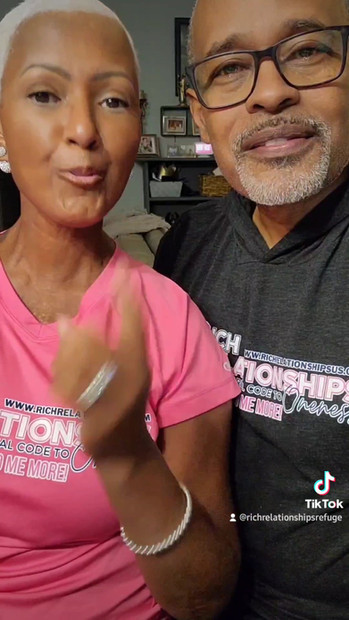Importance of life skills.
Life skills are behaviour development or behaviour change designed to address a balance of attitudes, knowledge and skills. Skills allow you to deal effectively with life'slife's challenges, making the most of life at work, at school or in your personal life. They are usually associated with the achievement and direction of quality improvement.
Life. Life skills help you achieve your ambitions and live your life to the fullest. Consequently, any valuable skill qualifies as a life skill.
Examples of life skills.
Money management skills; To manage money the right way, you need to learn how to set a budget and stick to it. This way, you will spend your money carefully.
Professional etiquette; This includes writing good emails and knowing how to behave in a professional environment. You must know how to communicate correctly.
Time management; Good time management is very important. However, that doesn'tdoesn't mean you have to work all the time. Reserve some time for leisure activities.

What are the essential life skills?
01. Making connections
What is making connections?
The life skill of making connections is fundamental to learning. The ability to make connections is based on the ability to see that symbols such as numbers, letters, and words represent real objects (symbolic representation). Making connections involves executive functioning skills, including recognizing what you know (working memory) and what is similar (cognitive flexibility) and classifying these things into categories (inhibitory control).
All children and adults can benefit from improving their ability to make normal and unusual connections, a key component of creativity.
promote contact
Here are some research-based ways to help kids improve their life skills of making connections:
Daily routines
Mealtime is a good time to bond. Ask the children how many people are having dinner and, accordingly, how many forks or napkins they need on the table; then show them the symbol for that number.
As they dress, ask the children to choose two items of clothing and identify how they are similar and how they are different.
Go out for a walk?
Ask the children to name three things they see and then ask what they have in common. Go ahead and discover new things that are similar and different; It'sIt's a great way to learn how to make connections.
ludic learning activities
Write the children'schildren's words as they say them, so they see the connection between what they say and the written words.
Invite the children to play sorting games by putting big things in one pile and small things in another. Then change the rules and sort by colour.

Play "Guess This Song". Ask the children to guess the name of the song by clapping their hands in time with the song.
learning strategies
Encourage the children to think about why they made a mistake and what they can learn from it. It helps to reflect on the connections between them.
02. Focus and self-control
What are mindfulness and self-control?
Life today can be stressful, and concentration and self-control skills are especially important when it comes to getting things done every day. Studies confirm that children with these skills are more likely to learn from educational experiences and practices, perform better academically, graduate from college, and experience better health and financial prosperity later in life.
Attention and self-control include executive functioning skills, including focus (attention); remembering what we need to know to use that information (working memory); Thinking flexibly to respond to changing situations in our lives (cognitive flexibility); and resisting an automatic response (inhibitory control) allows us to think before we act and choose a more appropriate response.
Promote attention and self-control.
Here are some research-based ways to help children improve attention and self-control:
Daily routines
Play games with children that involve paying attention to details, such as ''I spy'', to help them focus when cooking dinner, folding laundry, or waiting in line at the grocery store.
Time to clean? Increase attention by holding a toy and encouraging children to find similar ones to remove.
ludic learning activities
As you sing a familiar song together, pause and fill in a word so the
children can use their working memory to add the missing word.
When reading or reciting a story Making mistakes is a natural part of learning.
Oria, ask them to predict what will happen next; You have to pay close attention to understand this.
learning strategies
If children are constantly challenged by certain things, such as transitions or transitions, ask them to come up with their own plan for how to handle the situation. You encourage the development of self-control.
Please encourage them to keep trying when they make a mistake, so yeah.
What is perspective-taking?
Perspective-taking goes beyond empathy: it involves seeing things as others see them: their likes, dislikes, feelings, and thoughts. Includes executive functioning skills, remembering how others might respond (working memory); inhibiting our thoughts to understand the views of others (inhibitory control); seeing situations in different manner (cognitive flexibility); and considering the thoughts and feelings of others (reflection).
Perspective-taking develops in children over time, but it should be encouraged. Children with perspective-taking skills are more likely to adjust to school, understand what they are learning from reading and writing, and build positive relationships with less conflict.
Promote perspective taking
these are some research-based ways to help improve children's-children's perspectives:
Daily routines
Throughout the day, try to encourage children to talk about their thoughts and feelings and recognize how they differ from what others think and feel - they practice taking perspective!
ludic learning activities
When reading or telling stories, ask, "What do you think it is like?" Ask children open-ended questions about a character, such as Why do you think they feel this way?" so they can understand the character'scharacter's perspective.
Encourage children to express thoughts and feelings by acting out stories, telling them, drawing or dancing.

learning strategies
Help children listen to others by describing their thoughts and feelings about a shared experience.
Teach children to use words to express their feelings and learn to use this strategy instead of physical actions.
With the help of an adult, think about how to resolve a conflict with another child.
03. Decision-making and problem-solving
Decision-making and problem-solving are two key areas of life, whether at home or at work. No matter what you do, no matter where you are, you face countless decisions and problems every day, big and small.
Many more decisions and problems are so small that we may not notice them. However, even small decisions can be important to some people. They can get stuck considering their dilemma and trying to decide what to do.
Small and big decisions.
In your day-to-day life you will face many ''small decisions'', for example:
Tea or coffee?
What should I put on my sandwich? Or should I have a salad today?
What do I wear today?
Major decisions may occur less frequently but may include:
Should we repaint the kitchen? If yes, what colour?
Should we move?
Should I propose to my partner? Do I really want to spend the rest of my life with them?
Making these decisions and others like them can take a lot of time and effort.
decision making
effective decision making
This page provides information on ways to make a decision, whether based on logic or emotion ("gut feeling"). It also explains what might stop you from making an effective decision, including too much or too little information and not caring about the outcome.
A framework for decision making
This page describes a possible framework for decision-making.
The structure described is quite large and can appear quite formal. But running a short form is also a useful process for smaller problems because it helps ensure that you actually have all the information you need.
solving problems
Introduction to Troubleshooting
This page provides a general introduction to the idea of troubleshooting. It explores the idea of goals (things you want to achieve) and obstacles (things that keep you from achieving your goals) and explains the problem-solving process on a broad level.
Identification and structuring of problems
The very first step in solving any problem is to identify it and then break it down into its components. Even the biggest, seemingly intractable problems are more manageable if they are broken down into smaller pieces. This page provides some tips on techniques you can use to do this.
Search for ideas and solutions.
Sometimes the options for solving your problem are obvious. At other times, you may need to think laterally rather than involving others or finding alternatives. This page explains some principles and some tools and techniques to help you do that.
Implementation of a solution and feedback
After generating solutions, you need to decide which one to take, which is where decision-making meets problem-solving. But once you've decided, there is another step: handing over your decision and then seeing if the chosen solution works.
''Social'' problems are those that we encounter in everyday life, including money trouble, problems with other people, health problems and crime. These problems, like any others, are best solved using a framework to identify the problem, work out the options for addressing it, and then decide which option to use.













Comments